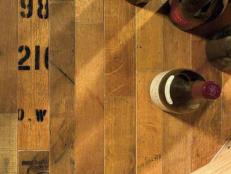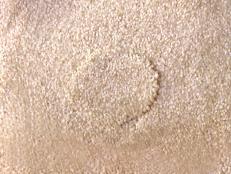Your Guide to Different Types of Carpet
Carpet is a good thermal and acoustic insulator. It's slip-resistant, easy underfoot and great for children to play on. Plus, it's available in a wide variety of colors, patterns and textures.
Buying new carpeting can be confusing. There are a lot of options to research and terms you need to know, such as: What carpet material is best? Which one is the most durable and easy to clean? What do pile, density and face-weight all mean? Which type of carpet is best for bedrooms and living rooms, and what about high-traffic areas? Read on to find the answer to all these questions.
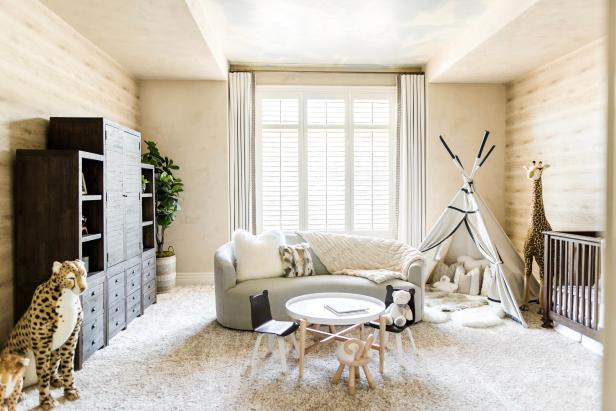
Alexis Alana Photography
Carpet Construction: What is Pile?
Pile refers to the carpet's individual fibers — how it is cut (format) and its height. Pile is categorized by the height of its fiber — low, medium or high. Low-pile carpet (under 1/4") is good for high-traffic rooms because its short fibers are already flat and dense, plus the shallower depth makes low-pile carpet easier to clean. High-pile carpet (1/2" to 3/4") has long fibers. It's soft and fluffy (think shag) and is good for bedrooms and playrooms — anywhere you're likely to be barefoot or sitting on the floor. High pile may require more maintenance and will likely leave marks or indents from furniture. Medium pile carpet (1/4" to 1/2"), as you probably guessed, is in between low and high.
Pile comes in three formats: cut fibers, loop fibers and a combo of the two, a cut-and-loop.
Loop Pile Carpeting
Loop pile means the fibers are bent into little loops. It’s a very durable, stain-resistant carpeting but has a low profile and limited cushioning.
Within the loop pile family are:
- Level loop is also called Berber. This type of carpet features short loops that stand up well in high-traffic areas.
- Multi-level loops mean the tops of the loops vary in height to give a carpet a patterned texture.
Cut Pile Carpeting
Cut pile carpets have had the tops sheared off so there aren’t any loops. Cut pile carpets tend to be denser and softer than loop pile.
There are a variety of cut-pile styles:
- Plush/Velvet has an even, smooth texture with a formal appearance. It's the type of carpet that you see lines in after vacuuming. It's good for low-traffic areas like bedrooms.
- Saxony has a smooth finish, but the fibers are longer and twisted to give each fiber more body. It’s popular, but the longer fibers mean footprints linger and furniture creates dents.
- Textured cut pile has fibers of uneven lengths to create a rougher surface texture.
- Frieze carpet has long fibers and isn’t recommended for high-traffic areas.
- Shag is a tall version of frieze. Shag's thick texture hides flaws and is extra comfortable for lounging on. However, its thick fibers require a heavy-duty vacuum.
- Cable has fibers of varied length and width. It is similar to frieze and comfortable underfoot.
Cut and Loop
Cut and loop is yet another type of carpet that has both cut pile and loop pile fibers and combines the best qualities of both. It’s good for hiding dirt and stains.
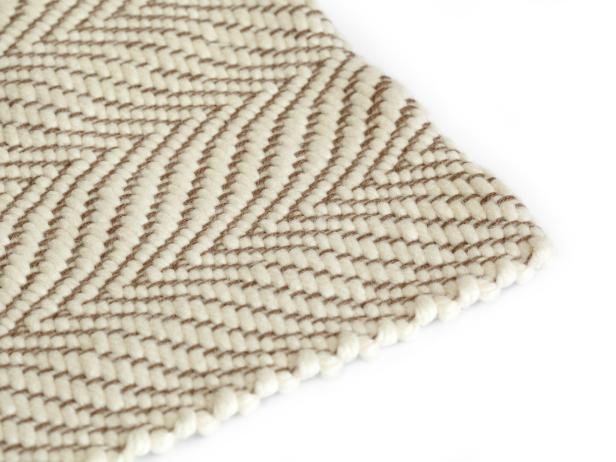
Brian Patrick Flynn
Cut and loop carpet is almost as popular as solid cut pile, but better fit for homeowners interested in subtle patterns.

The term "cut pile" refers to the way the carpet's fibers are cut to the same height to create a flat surface underfoot.
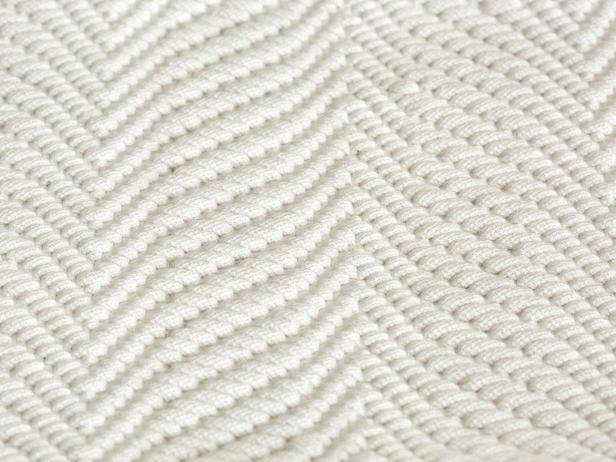
Brian Patrick Flynn
Loop carpets can be a great choice for high-traffic areas because of their longevity and easy maintenance. Many patterns can be achieved through contrast in color and tone-on-tone patterns.

A multi-level loop pile can add textural stripes to a carpet and is a nice choice for introducing a subtle yet graphic pattern to a space.

Brian Patrick Flynn
Shag carpeting is a cut-pile carpet. Although not a smart choice for areas geared toward eating such as dining rooms, shag carpet is ideal for spaces like bedrooms and playrooms. Shag's thick texture hides flaws and is extra comfortable for lounging on, making it a great option for homes with kids and pets.
Types of Carpet Fibers: The Pros + Cons of Each
Fiber (carpet yarn) is the basic material in a carpet. Fiber is either manmade (nylon, polyester, polypropylene/Olefin, acrylics, Triexta) or natural (wool, sisal). Each has different characteristics when it comes to feel, wear, longevity and the ability to clean.
Nylon
- Pros: Nylon carpet is the most common and popular carpet fiber. It is durable and resistant to stains and static electricity. It can be used almost anywhere including high-traffic areas. Nylon can be made into a variety of styles including shag, Berber and frieze. It's a great alternative to wool and a good choice for homes with pets.
- Cons: It’s not naturally good at fighting stains, so make sure it has been given a stain-resistant treatment.
Polyester
- Pros: Colorfast, soil resistant and often hypoallergenic, polyester carpeting is often manufactured from recycled materials.
- Cons: Polyester is not always as durable as other man-made fibers, so it may not be the best choice for high-traffic areas. It can also fade in the sun, so keep it out of rooms with direct sunlight.
Olefin/Polypropylene
- Pros: It is resistant to moisture, mold and mildew and makes a good carpet for basements and outdoors. It is usually only used in low-pile carpeting. It's often the most inexpensive option.
- Cons: It’s not as tough as other synthetic fibers and not as comfortable to walk on.
Acrylic
- Pros: It is often used as an inexpensive alternative to wool. Acrylic is color-fast and resists stains and sun bleaching.
- Cons: Acrylic can pill and fuzz just like wool.
Wool
- Pros: Wool is the premier carpeting and the only natural fiber made into carpets. It’s durable and stain-resistant, and is considered an eco-friendly floor covering.
- Cons: It’s not hypoallergenic, which means you might sneeze a bit if allergic to wool. Mohair is known for its tendency to shed, so it may require more maintenance. Its color can fade in direct sunlight.
Triexta
-
Pros: Eco-friendly Triexta is a new synthetic fiber that is made from corn. It is durable, extremely stain- and fade-resistant, as well as easy to clean.
-
Cons: Can be more expensive than other synthetics.
The Best Carpet Cleaners, Tested by HGTV Editors
From deep cleaning to spot cleaning, our editors share the best carpet cleaners for every lifestyle after testing top-rated machines.
Carpet Quality: What is Weight, Twist + Density?
There’s no universal grading for carpet quality, so beware of manufacturers' claims to offer one. Instead, consider weight, twist and density.
Weight (or face weight) indicates how many fibers are present in the carpet. The more fibers, the heavier the weight and the higher the quality of the carpet.
Density is the amount of fibers in the pile and how closely they're packed together. The denser, the better. There are two ways you can field-test density. Run your fingers through the fiber — if you predominately feel the carpet backing, the carpet won’t be very dense. The other way to check is by doing the fold test. With the tufts facing outward, bend the carpet sample into a U shape to see how much of the carpet backing shows. The less backing you see, the more dense the carpet.
Twist level indicates the number of twists given to each carpet pile. The tighter the twist, the better the carpet will stand up to crushing and indentations. It is important in high pile carpets because they're more likely to untwist under high traffic.
Average Cost to Install Carpet Per Square Foot
Knowing the average cost of installing carpet can help you dial in your remodeling budget.
Why is Underlayment Important?
Proper underlayment (also called cushion, pad or underlay) is a thin foam, fiber or rubber layer installed beneath the carpet. Certain underlayments work best with certain types of carpeting, so it's vital to get the right match. It will extend the carpet's longevity, add cushioning, insulate and keep your carpet cleaner. Check with your manufacturer to determine which is best for your carpet.
Choosing Carpet: What's Best for Each Room?
High-traffic areas, hallways, spaces with direct access to the outdoors will require a carpet that wears well and can easily and often be cleaned. Level loop and multilevel loop carpets like Berber are a good choice because the tips of yarn aren’t exposed to dirt and wear. With a cut loop, the dirt can work its way into the carpet, while a loop will stand up better than a cut fiber. Nylon, wool, olefin and polyester are good choices for heavy foot traffic or dining rooms, however, wool can be harder to clean and remove odors. Also, go for a heavier face weight because it will be sturdier and last longer.
Bedrooms and playrooms or any space where shoes are rarely worn and people may sit on the floor can go with a medium to high-pile carpet that is warm and comfortable. Polyester and nylon are good choices if you’re concerned about allergens and shedding. If that’s not a concern, natural wool is a good choice. For style underfoot try a cut pile like shag, frieze, velvet or saxony.
Home with pets will do well with man-made fibers such as nylon, olefin or Triexta due to their durability and low maintenance. These synthetic fibers are easier to clean and don’t absorb odors as much as natural fibers such as wool or sisal. Cut-and-loop carpet is not ideal for homes with pets since claws and paws tend to snag on the loops.
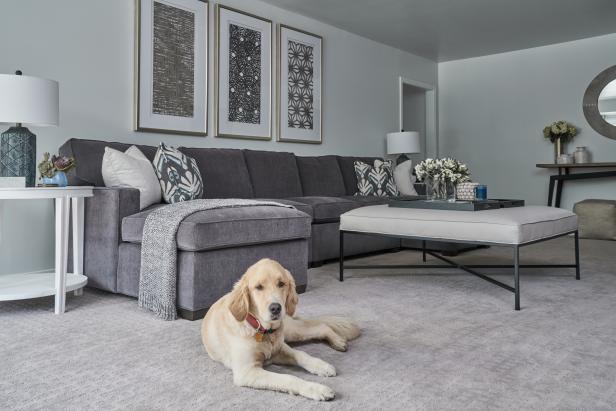
Amy Peltier Interior Design & Home
Is Carpeting Eco-Friendly?
When it comes to the environment, carpet manufacturing has come a long way. Consider this: Some manufacturers are making carpet fibers from recycled soda and water bottles. The bottles are sorted, ground into chips and cleaned; the chips are then melted, extruded into fiber and spun into carpet yarn. Other carpet fibers are crafted from corn sugar. Plus, manufacturers are taking steps toward greener production, from reducing greenhouse emissions to extending carpets' longevity to reduce waste. The industry is also minimizing environmental impact by recycling carpet at the end of its life, whether into new carpet or other products, such as roofing shingles and automotive parts. Fun fact: About 90% of the US carpet market is supplied by mills in Georgia.
Popular Misnomers
Two types of area rugs that are commonly called “carpets” are Persian carpet and sisal carpet. Both have loop pile construction.
















